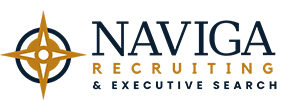
Recruiters and hiring managers read hundreds of resumes a day. Only by quickly scanning for success indicators on each resume can they get through so many people. So one might think getting creative with your resume could be a good idea. But is it?
Creative resumes can be a good idea in certain industries and for specific job positions, especially when you want to showcase your artistic and design skills. However, it’s essential to consider the industry norms, company culture, and specific requirements of the application process to ensure your resume stands out while still effectively communicating your qualifications.
When it comes to creating a resume, regardless of whether it’s a traditional or creative format, there are certain “musts” that you should include (and don’t forget to proofread!). The following are some of the most vital elements of a successful resume:
Contact Information
Include your full name, phone number, email address, and optionally your physical address. Make sure this information is accurate and up to date.
Summary
Create a captivating professional summary or objective statement that emphasizes your most relevant skills, experiences, and aspirations. Personalize it to the organization and position you’re applying to.
Employment History
Describe your employment experience in reverse chronological order, beginning with your most recent or present employer. For each position you’ve had, provide the firm name, position title, start and end dates, and a summary of your duties and achievements.
Education
Include your educational background, including degrees earned, institution names, dates of attendance, and any relevant certifications or licenses.
Skills
Highlight your relevant skills, both technical and soft skills, that are applicable to the job you’re applying for. Be specific and provide examples of how you’ve applied these skills in previous roles.
Achievements and Accomplishments
Showcase your accomplishments, such as awards, acknowledgments, publications, and completed projects. These items speak to your talents and distinguish you from other applicants.
Optional Sections: Depending on your industry and the job requirements, you can include additional sections like certifications, professional affiliations, volunteer work, languages, or relevant hobbies. These can provide further insight into your qualifications and interests.
Tailor to the Job
Customize your resume for each job application by incorporating keywords and skills mentioned in the job description. This helps your resume align with the specific requirements of the position.
Industry lingo
Using industry lingo or jargon in your resume can demonstrate your familiarity with the field and make you appear more credible to potential employers. For example, the title Account Manager can be used to describe a variety of job functions. When a candidate uses a term like hunter or farmer, it immediately sets them apart.
Remember, the purpose of a resume is to effectively communicate your qualifications, experiences, and achievements to potential employers. By including these “musts” in your resume, you can create a strong foundation for showcasing your suitability for the job.
